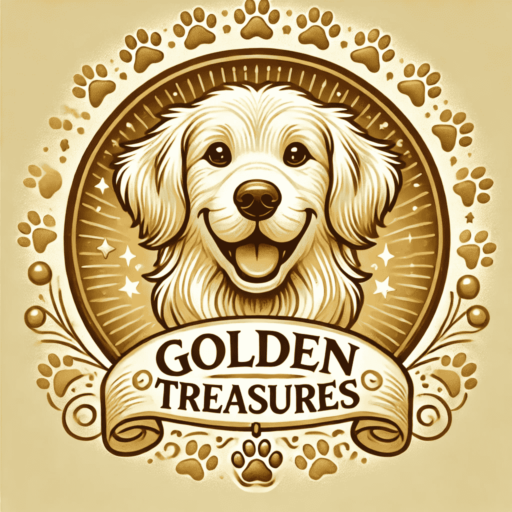Welcome to the wonderful journey of owning a Golden Retriever! If you’re a new pet owner, you’re in for a fulfilling experience with one of the most loyal, intelligent, and affectionate dog breeds. But with a Golden Retriever, it’s not all about affection and play; it’s also about responsibility, structure, and effective training. Early and consistent training is essential for a Golden Retriever. These energetic and fun-loving dogs thrive when learning new commands, socializing, and engaging in mental and physical stimulation. Proper training will not only prevent behavioral problems, it will also ensure a strong bond between you and your furry friend by helping you understand Golden Retriever Behavior.
In this blog, we’ll discuss essential tips for training a Golden Retriever. From basic commands to potty training and leash training, we’ll cover everything from how to get your dog used to a leash. Let’s get started on turning your Golden Retriever into a well-behaved, happy, and obedient companion!
Contents
- 1 Understanding Golden Retriever Behavior and Temperament
- 2 When to Start Training Your Golden Retriever
- 3 Core Training Principles Every Owner Should Know
- 4 The First Basic Commands to Learn
- 5 Potty and Crate Training Tips
- 6 Leash Training for Calm Walks
- 7 Puppy vs. Adult Training Techniques
- 8 Overcoming Common Training Problems
- 9 Training Aids That Help
- 10 Time Management for Consistent Training
- 11 Conclusion
Understanding Golden Retriever Behavior and Temperament
Why Golden Retrievers are easy to train: intelligence & eagerness to please
Golden Retrievers are known for their friendly, outgoing, and loyal personalities, making them one of the most trainable dog breeds. Their high intelligence and eagerness to please make them quick learners, especially when training methods involve positive reinforcement. These dogs thrive on praise, treats, and affection, which can be powerful motivators during training sessions.
Common personality traits that affect training
Common personality traits that influence training include their natural curiosity, playfulness, and strong desire for social interaction. However, these traits can also lead to distractions during training. Golden Retrievers can be easily excited, so it’s essential to maintain patience and consistency when teaching new commands.
Setting realistic expectations for learning speed and behavior
Setting realistic expectations is vital. While Golden Retrievers are smart and receptive, they may not grasp complex commands immediately. Break training into small, manageable steps and celebrate every achievement. Remember, patience and persistence are key to shaping a well-behaved and confident Golden Retriever.
When to Start Training Your Golden Retriever
Ideal age to begin training: puppy vs. adult
Starting training at the right age is crucial for developing good behavior and preventing issues later. Ideally, training should begin when your Golden Retriever is a puppy, around 8 to 12 weeks old. At this stage, focus on basic commands like “sit,” “stay,” and “come,” along with housebreaking and crate training. Puppies are highly receptive to learning, making it the perfect time to instill foundational commands.
What to train first at each stage
For adult Golden Retrievers, training may require more patience, especially if they haven’t had any previous training. Focus on essential commands and socialization while gradually introducing more advanced commands. Consistency is key, as older dogs may take longer to unlearn bad habits.
Why early training prevents behavioral issues later
Early training not only establishes boundaries but also prevents common behavioral issues such as excessive barking, jumping, and chewing. The earlier you start, the easier it is to shape your Golden Retriever into a well-mannered, obedient companion.

Core Training Principles Every Owner Should Know
Consistency, patience, and repetition
Successful training for Golden Retrievers revolves around a few key principles: consistency, patience, and repetition. Dogs thrive on routine and structure, so maintaining a regular training schedule helps reinforce good behavior and prevents confusion. Repeat commands consistently and use the same cues to avoid mixed signals.
The value of positive reinforcement
Positive reinforcement is one of the most effective training methods for Golden Retrievers. These dogs are eager to please and respond well to praise, treats, and affection. Rewarding desired behaviors with treats or toys encourages them to repeat those actions, making learning enjoyable and productive.
Keep training sessions short and engaging
Golden Retrievers can get easily distracted, so limit each session to 10-15 minutes to maintain focus. Incorporate fun games, such as fetch or tug-of-war, to make learning feel less like a chore and more like a bonding experience.
Using treats and toys effectively
Using treats and toys strategically can further enhance training. Choose high-value treats for challenging commands and reserve favorite toys for rewards during training. This reinforces the idea that good behavior leads to positive outcomes, fostering a strong, trusting bond between you and your Golden Retriever.
The First Basic Commands to Learn
Learning basic commands is the foundation of good behavior for Golden Retrievers. Start with the five basic commands: sit, stay, turn, down, and go.
Sit:
Start with a treat in your hand. Place it under your dog’s nose and slowly move it up. When your dog tilts his head to follow the treat, his rear will naturally drop to the ground. Once he sits, reward him with a treat and say, “Sit.” Repeat this until the command is tied to the action.

Stand:
Once your dog has mastered the sit command, move on to the stand command. Ask your dog to sit, then place your hand in front of his face and say, “Stand.” Take a step back and reward him if he stays there. Gradually increase the distance and break it up into several sessions.
Come:
Put on the leash and say, “Come” in a happy, excited tone. Gently tug on the string to direct the movement toward you. Reward him generously if he responds correctly.

Down:
Ask your dog to sit, hold a treat near the ground and lead him off the ground. When the snack is brought, he lies down alone. Reward him and say, “Sit.”
Leave it:
Hold the treat in one hand and say, “Leave it.” If your dog tries to grab you, squeeze your hand. If he backs away, reward him with another treat and praise.
Potty and Crate Training Tips
Potty training is one of the most important aspects of raising an obedient Golden Retriever. While it may take several weeks to several months for your dog to fully master potty training, consistency and patience are key.

Tips for setting a potty schedule
Create a routine that is appropriate for your dog’s age. Take him for a walk every two to three weeks. hours after eating, playing, or waking up. Choose a designated area for him to do his business, and reward him with praise and treats when he does it. Consistency ensures that the location is associated with the action.
Using crate training to speed up learning
Using a crate can greatly speed up the potty training process. Crates provide your Golden Retriever with a safe, comfortable place to stay and prevent accidents. Make sure the crate is the right size so that your pet can stand, turn around, and lie down comfortably.
Gradually acclimate your dog to the crate by placing treats and toys inside and leaving the door open at first. If it is safe, you can close the door for short periods and gradually increase the duration.
Leash Training for Calm Walks
Importance of leash manners early on
Leash training is an important skill that will ensure safe and enjoyable walks with your Golden Retriever. Teaching your dog to wear a leash properly from an early age will help prevent pulling, tugging, and other unwanted behavior.
Intro to heel, stop, and walk cues
Start by learning basic cues like “heel,” “stop,” and “step.” Practice these tasks in an environment with minimal distractions to help you focus. Use a strong leash and a comfortable collar or harness for better control.

Tools for effective leash control
Reward your dog when he walks calmly at your side and responds quickly to your cues. Keep sessions short and positive to avoid frustration.
Puppy vs. Adult Training Techniques
Training motivation for each age group
Training techniques for puppies and adult Golden Retrievers differ significantly due to variations in attention span, energy levels, and learning capabilities. Puppies are naturally curious, full of energy, and eager to explore. This makes them highly receptive to training but also easily distracted. Training sessions for puppies should be short (5-10 minutes), fun, and reward-based to keep their focus and prevent boredom.
Adult Golden Retrievers, on the other hand, may have established habits that can be more challenging to modify. While they have longer attention spans than puppies, they may also be less motivated to learn new behaviors. Consistency and patience are crucial when working with adult dogs, along with using high-value treats and plenty of praise.
For puppies, focus on basic commands such as “sit,” “stay,” and “come,” along with house training and leash manners. Adult Golden Retrievers can handle more complex commands and behavior modification, especially if they need to unlearn bad habits.
Overcoming Common Training Problems
Training a Golden Retriever can be challenging, whether due to stubborn behavior or failures. It is important to be patient and consistent, even if progress seems slow.
Addressing stubborn behavior
If your Golden Retriever is being stubborn, you should check to see if the training method you have chosen is right for him. Some dogs do not respond well to strict commands but thrive on positive reinforcement. Use treats, toys, and enthusiastic praise to motivate your dog and maintain his interest.
Staying motivated through setbacks
Failures are common, especially during the training phase. Stay calm and do not punish your dog, as this can cause fear and anxiety. Instead, go back to basics and practice commands in a distraction-free environment.
Seek professional help
If training difficulties persist or worsen, you should seek professional help. A dog trainer or behaviorist can develop targeted strategies to address specific problems, such as excessive barking, leash pulling, or failure to respond to commands.
Training Aids That Help
Clickers, treat pouches, leashes, harnesses, training mats
Using the right training equipment can greatly improve your Golden Retriever’s training. Important training aids include clickers, treat bags, collars, harnesses, and training mats. Clickers are great for signaling desired behavior and helping your dog better understand what he’s being rewarded for.

Choosing the right gear for your dog’s size and behavior
Treat bags help keep snacks on hand during training so you can immediately reward good behavior. When choosing leashes and harnesses, look for ones that are durable, comfortable, and appropriate for your dog’s size and activity level. For Golden Retrievers, a harness with a front handle can help reduce your dog’s jerkiness while walking.
Training Mats
Training mats provide a dedicated area for practicing commands like sit and lie down, creating an environment where your dog can focus and avoid distractions. Choosing the right tools will make training more effective and enjoyable for you and your Golden Retriever.
Time Management for Consistent Training
Creating a realistic daily schedule
Consistency is key when training your Golden Retriever. By creating a realistic routine, you maintain structure and reinforce learned behaviors. Choose short, focused training sessions, ideally 10 to 15 minutes per session, spread throughout the day. This will prevent your dog from becoming overwhelmed and will keep him motivated and engaged.
Training Schedule
Schedule at least two to three training sessions per day, focusing on different commands or behaviors to keep your dog’s mind stimulated. Alternate training sessions with ample play time and rest breaks to avoid overtraining. Incorporating exercise into daily activities, such as walking or eating, can also reinforce commands without requiring additional time.
Balancing training with play and rest
Being consistent with timing, commands, and rewards will help your Golden Retriever better understand what is expected of him. This makes it easier for him to remember new skills.
Conclusion
Training a Golden Retriever is a journey full of small successes and learning moments. Celebrate every success, no matter how small, to motivate yourself and your dog. Remember that every dog is unique, and understanding Golden Retriever Behavior is key to effective training. Don’t compare your progress to others. Some dogs learn commands quickly, while others need more time and patience. Training is more than just learning commands; it’s a bonding experience that strengthens the bond between you and your Golden Retriever. Be patient, consistent, and enjoy watching your dog learn and grow.
Dr. Nabeel A.
Hi, I’m Dr. Nabeel Akram – a farm management professional by trade and a passionate Golden Retriever enthusiast at heart. With years of experience in animal science and livestock care, I’ve built a career around understanding animals—how they live, thrive, and bring value to our lives. This blog is a personal project born from that same passion, focusing on one of the most loyal and lovable breeds out there: the Golden Retriever. Whether I’m managing farm operations or sharing insights on canine health, behavior, and care, it all ties back to one core belief—animals deserve thoughtful, informed, and compassionate attention. Welcome to a space where professional expertise meets genuine love for dogs.
Facebook |


Links will be automatically removed from comments.